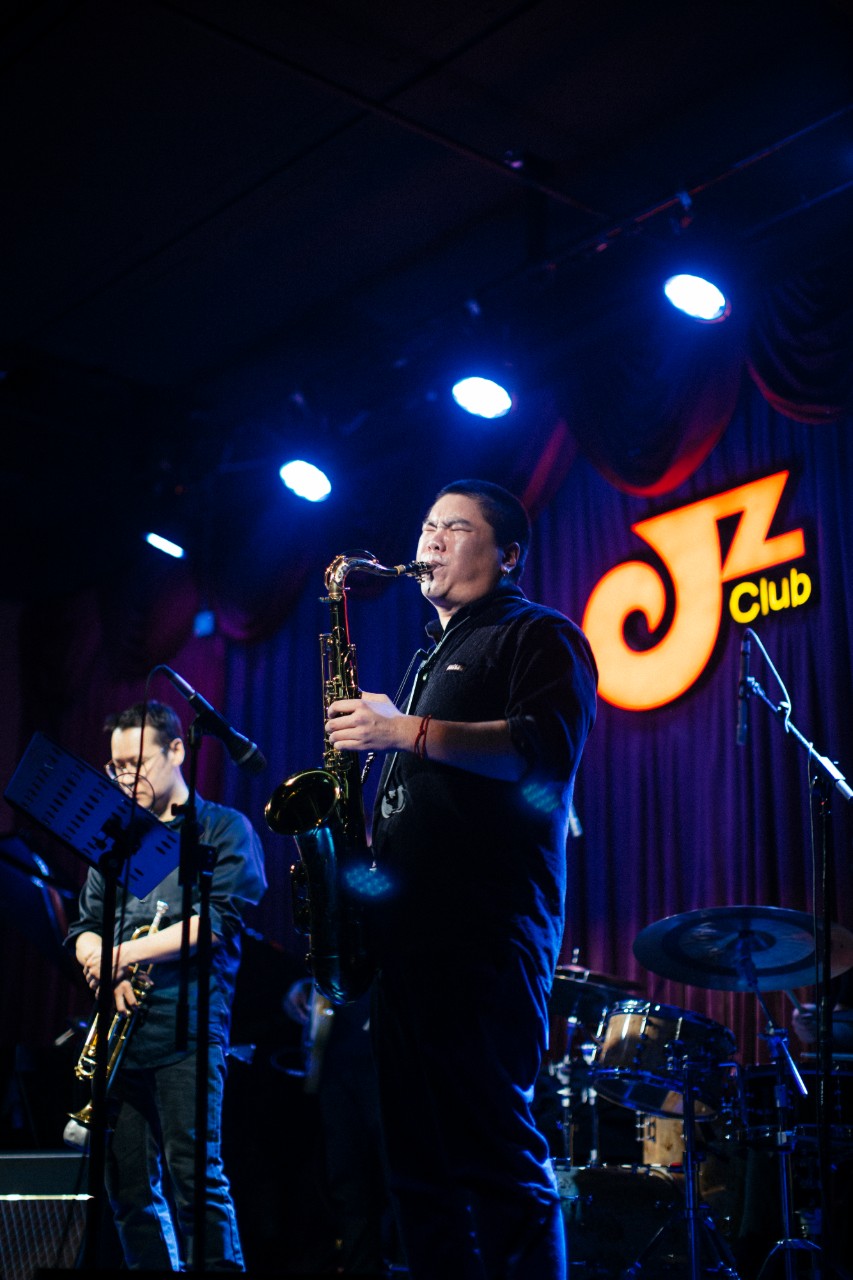Starched dinner jackets match the white hair of the Old Jazz Band at Shanghai’s historic Fairmont Peace Hotel. Acknowledged as the world’s most elderly band until they were succeeded by a Japanese trio formed in 2008, their average age is 82.
The most senior member, whose creaking fingers have necessitated a switch from trumpet to maracas, will celebrate his 100th birthday later this year. Over the decades, these slick virtuosos have played for Thai royalty, movie stars and American presidents against a backdrop of carved Italian marble and Art Deco fixtures in this luxurious 1929-built hotel.
They’ve seen the turn of many tides in Shanghai’s jazz scene, from its heyday in the roaring ’20s and ’30s, to its near extinction during the Cultural Revolution of the ’60s and ’70s, to its rediscovery and revival after the reform and opening up of the post-’80s era.
Today, these revered musicians, liver spots and all, personify Shanghai’s love affair with jazz – one that’s entering a new and exciting phase of development and experimentation. Despite having a relatively small live music scene compared to other big cities in Europe, America and other parts of Asia, the self-styled Paris of the East has found a foothold at the forefront of modern jazz.
In November 2019, JZ, one of Shanghai’s best-known promoters of contemporary music, opened JZ Live, an ambitious new “jazz living space”, complete with a vinyl shop, club, guitar studio and restaurant, proving that jazz in Shanghai is anything but old hat. Ren Yuqing, the founder of JZ Club, JZ School, the annual JZ Jazz Festival and the all- new JZ Live complex says:
“When you go to jazz clubs in Europe or America, everyone is over 50. Here in China, it’s all young people, but we had some catching up to do.”
Jazz first appeared in Shanghai in the 1920s, when the eastern coastal city served as China’s bridge to the world. It saw the lion’s share of the country’s foreign imports, both economic and cultural, and quickly became the most modern metropolis in Asia, dripping in neon, movie theatres and nightclubs.
With excitement spreading to every level of society – even Chiang Kai-shek, China’s revolutionary nationalist leader, had American jazz band leader Whitey Smith play at his wedding– a future of collaboration and evolution was inevitable. A unique fusion of Chinese traditional folk music and American jazz known as shidaiqu sprung up, combining the nasal tones of Chinese opera with jazz instruments and rhythms.
When the communists came to power in 1949, however, they denounced popular music as pornography and prescribed a strict diet of revolutionary songs. As record shops and producers fled and musicians jettisoned their instruments for fear of being branded bourgeois rightists, jazz all but disappeared from Shanghai’s, and China’s, consciousness.
Contemporary music materials were still hard to come by when Lawrence Ku, whose parents fled to Taiwan during the Cultural Revolution, first returned in 1997. The guitarist tells of how local musicians relied on foreigners to bring in supplies, with the only jazz CDs available having already been rejected by the wider world. Known as dakou (big hole), these albums sold so badly elsewhere that holes were drilled through the discs to make them unsaleable before they were shipped to China for recycling.
Such was the desperation of China’s young musicians at the time, these defaced CDs were sold on; those with holes closer to the rim – meaning the album played for longer – commanded higher price tags. For the first time in decades, young people were listening to jazz. “Back then, people were just starting to explore and there was very much a jam culture,” Lawrence, who now tours with celebrated Chinese singers Karen Mok and Li Ronghao, says. “It was gritty and a lot of fun, but there wasn’t much original music happening, especially among Chinese musicians.”
“All modern music stems from jazz, but it doesn’t belong to America anymore. Jazz belongs to the whole world, including China”
Thanks to an education system that traditionally favours rote learning over critical thinking, China is renowned for producing academically gifted but creatively insecure students. And as most musically inclined youngsters begin their training in classical music, which calls for unwavering adherence to the notes on the page, the improvisation and collaboration jazz calls for doesn’t always come naturally to Chinese musicians.
Perhaps Shanghai’s most famous homegrown jazz diva, Coco Zhao was singing to pay his way through music school when he first came across jazz in 1996. “I loved it. Not for any particular reason, but when you really love something you don’t need one,” he explains between sips of steaming chai tea in the city’s trendy Tianzifang lanes.
Coco has since become known for following in his jazz forefathers’ footsteps, taking inspiration from the early fusion music of shidaiqu and adapting 1920s Shanghai songs with contemporary jazz idioms and his own youthful flare. Although he maintains a steady global tour schedule and hopes to emigrate to the Netherlands soon, he plans to leave a gift for the next generation of musicians before he goes – a compilation of charts and audio of jazz standards composed in Shanghai since the city’s second jazz awakening in the early 1990s.
“It won’t make any money and it will need lots of time and energy, but I believe it’s very meaningful, and one day the young musicians of China will thank me.”
Within the no-frills walls of JZ School, which runs a full-time contemporary music programme in the city’s leafy former French Concession, Ren Yuqing is convinced jazz is both the past and the future of local music. “All modern music stems from jazz, but it doesn’t belong to America anymore. Jazz belongs to the whole world, including China,” he says. “It doesn’t, and shouldn’t, stand still.”
















